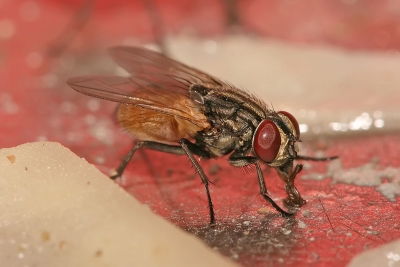
The house fly, Musca domestica Linnaeus, is a well-known cosmopolitan pest of both farm and home. This species is always found in association with humans or the activities of humans. It is the most common species found on hog and poultry farms, horse stables and ranches. Not only are house flies a nuisance, but they can also transport disease-causing organisms.
This common fly originated on the steppes of central Asia, but now occurs on all inhabited continents, in all climates from tropical to temperate, and in a variety of environments ranging from rural to urban. It is commonly associated with animal feces, but has adapted well to feeding on garbage, so it is abundant almost anywhere people live.
Flies commonly develop in large numbers in poultry manure under caged hens, and this is a serious problem requiring control. Although this fly species does not bite, the control of Musca domestica is vital to human health and comfort in many areas of the world. The most important damage related with this insect is the annoyance and the indirect damage produced by the potential transmission of pathogens (viruses, bacteria, fungi, protozoa, and nematodes) associated with this fly. Pathogenic organisms are picked up by flies from garbage, sewage and other sources of filth, and then transferred on their mouthparts, through their vomitus, feces and contaminated external body parts to human and animal food.
Picture Credit : Google




